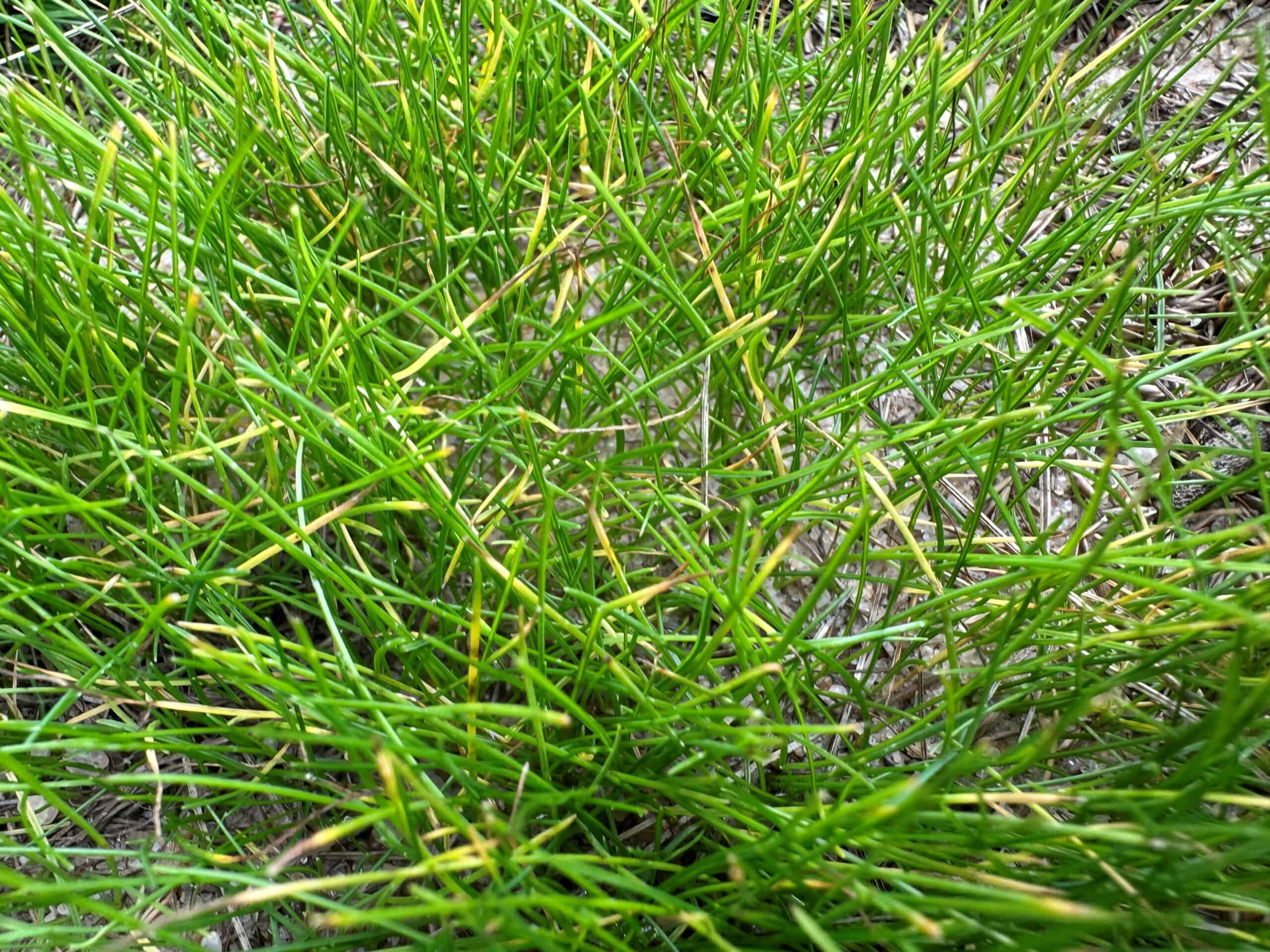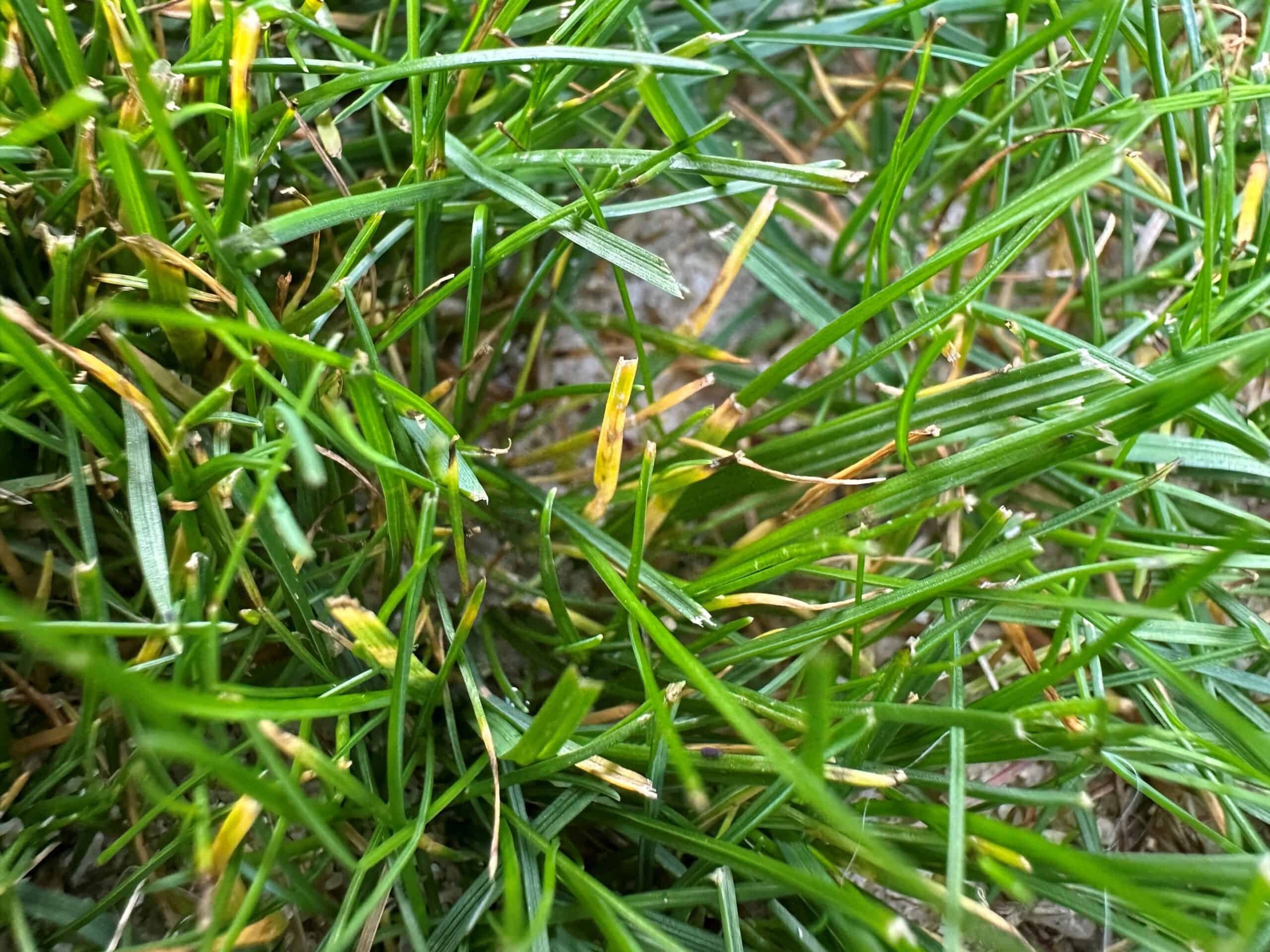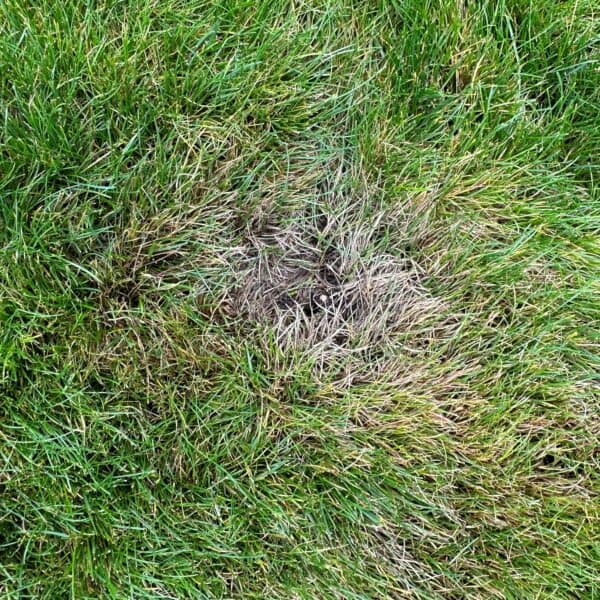Leptosphaerulina spp
Leptosphaerulina leaf blight, a fungal disease, can affect a wide range of turfgrass species predominantly cool season varieties, causing aesthetic damage and reducing overall turf health. This guide provides information on identifying, understanding, and managing Leptosphaerulina leaf blight in your lawn.
The Cause and Susceptible Turf
The culprit behind this disease is a fungus belonging to the genus Leptosphaerulina. Several species within this genus can cause leaf blight, but the most common ones associated with turfgrass include L. americana, L. argentinensis, and L. trifolii.
Symptoms and Identification
Early detection is important for effective management of Leptosphaerulina leaf blight. Here’s what to look for:
- Leaf discoloration: The initial sign is often a yellowing or straw-coloured discoloration developing from the tips of individual blades.
- Lesion development: As the disease progresses, the discoloured area expands down the leaf blade, turning uniformly yellow to brown. These lesions can extend to the leaf sheath in severe cases.
- Water-soaked patches: In some instances, water-soaked spots may appear on the leaf blade, quickly fading to a bleached white colour. This can be misleading, resembling heat stress or mower damage.
- Patchy or uniform blight: Affected areas may appear patchy or show a uniform blighting effect across larger sections of turf.
- Tiny black fruiting bodies or spots: In advanced stages, small, brown, pimple-like structures called perithecia develop on dead leaf tissue. These are the fungal fruiting bodies containing spores for further spread.
Conditions Favouring the Disease
Leptosphaerulina leaf blight flourishes under warm and humid conditions, typically during spring and fall. Factors that can increase the risk of infection include:
- Excessive moisture: Poor drainage, frequent irrigation, or extended periods of dew can create a favourable environment for fungal growth.
- Stressed turf: Turf weakened by drought, nutrient deficiencies, compacted soil, or excessive wear and tear is more susceptible to fungal diseases.
- Improper mowing practices: Leaving grass clippings on the lawn can trap moisture and create ideal conditions for fungal growth.
Management Strategies
A comprehensive approach that combines cultural practices and, if necessary, fungicides is recommended for managing Leptosphaerulina leaf blight.
Cultural Practices:
- Promote healthy turf: Implement practices that promote healthy turf growth, such as proper fertilisation, balanced watering (deep and infrequent), and core aeration to improve drainage.
- Removing Dew: Using a Dew whip, electrical conduit, heavy rope, Level Lawn or anything else to remove the dew each morning and allowing the turf to dry sooner.
- Mowing practices: Maintain a proper mowing height for your turfgrass type and remove grass clippings to improve air circulation and prevent moisture build-up.
- Reduce stress: Minimise activities that stress the turf, such as excessive foot traffic or herbicide application, during periods favouring the disease.
Fungicide Application:
In severe cases, fungicide application might be necessary. However, this should be a last resort, following labelled instructions.
Additional Tips
- Early detection and intervention: Early identification and action is needed for effective management. Regularly monitor your lawn for signs of disease.
- Accurate diagnosis: If unsure about the cause of turf discoloration, consider contacting us for an accurate diagnosis to ensure proper treatment.
- Record keeping: Maintaining a record or following a plan of cultural practices and any fungicide applications used can be helpful in managing the disease in the long run.



